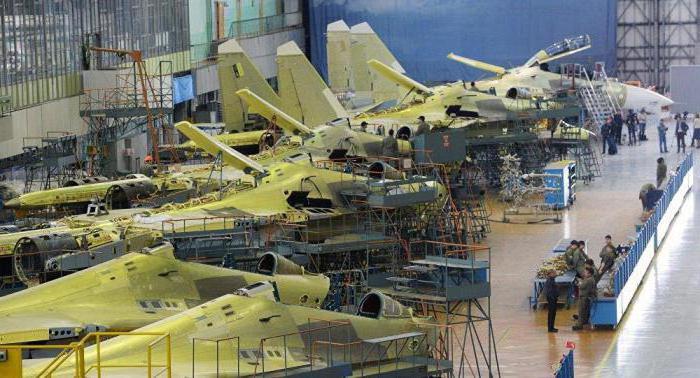Offset transaction is one of the types of cooperation in the field of countertrade, which, like barter, countertrade and countervailing operations, occupies a significant and significant place among the diverse tools of all world trade as a whole.
Features of transactions
An essential and, perhaps, the most distinctive feature of offset schemes is that they are used most often in the sale of goods that are made for military purposes. Sometimes high-tech and expensive civilian products are used. An important condition for the type of transactions presented is the counterclaim on the investment of part of the funds received from export contracts in the economy of the importing state.
Of course, the offset requirement of the importer, in fact, is a burden for exporters, however, this should be treated with patience. The direct export item in such transactions is very expensive products, among which you can list aircraft and shipbuilding. All markets for the goods listed, from a commercial point of view, if the trade is not carried out on the basis of interstate loans, are the trading floors of the buyer. And directly the buyer, in turn, has the ability to dictate his requirements.
pros
There are certain advantages to offset deals for exporters. In this case, the buyer, as practice shows, fully pays off with the seller and covers the entire cost of this or that equipment. There is no such thing in conventional commercial deliveries. In deliveries on account of interstate agreements, where there are signs of credit, such a factor is also absent.
Purchasing Party Requirements
It should be noted that, despite the fact that offset transactions are classified as varieties of the external sphere of trade, counter obligations, as a rule, do not include purely economic, but in a wider sense, requirements of interstate interaction. Depending on the amount of contracts, the requirements of the procuring parties may contain the following nuances:
- Providing direct investment.

- Technology transfer and exchange.
- Licensing of production.
- Investing in the scientific and research field of the buyer state.
- Creation and development of joint ventures involved in the production of target products in the required territory.
- Localization of production.
- Providing loans and training.
- Construction of production facilities, and, in addition, social infrastructure on the territory of the importing state.
What is an offset transaction on an exchange? About it further.
Offset Types
There are only two types of offset:
- Direct Offsets. Direct offsets are associated with products or the provision of various military services. These services and goods are exported by military-industrial companies. Often this type of offset comes in the form of co-production along with subcontracting, technology transfer, training, production or financing.

- Indirect offset. Indirect offsets are not related to any military products or services that would be exported by defense companies. Indirect offsetting involves the acquisition along with investment, training, financing, assistance with marketing or export, and, in addition, the transfer of technology.
Introduction of offset schemes in Russia
There is no specially developed legislative regulation of offset transactions in our country today. Accordingly, for this reason, there are no detailed principles along with restrictions on the commission of this type of transaction. Most of the nuances and subtleties of offset in domestic practice are based on regulation in contracts.
It is worth emphasizing that a large number of contracts in this area do not yet exist. Moreover, despite the absence of special legislation, a number of large Russian international transactions for the supply of military equipment possesses the features of classic offset, which are used by industrialized countries in the field of mutual trade with the developing world.
An example is the agreements that were signed with Venezuela and some other countries. But the lack of a detailed legislative framework with transparently approved transparent conditions and, in addition, restrictions for such transactions severely restrains the potential and prevents the development of defense products trade with an even wider circle of states.
It can be assumed that the development of the offset trading system, including in the former post-Soviet space, can not only increase the potential of Russian supplies of military equipment, but also stimulate domestic investment impact along with the scientific and technical penetration into the economy of partner states.
Fines
Unlike contracts of previous periods, modern offset documents invariably contain lists of penalties that apply to exporters in situations where they fail to fulfill their immediate obligations. As part of the application of sanctions, even the exclusion of the supplier company from any subsequent tenders may follow. For example, Norway imposes a fine of up to ten percent of the contract amount, and Denmark even makes its suppliers blacklisted, refusing further cooperation.
Main players
Since in the offset transactions under the contract the main subject of exchange in the overwhelming majority of situations is military products, the main players in this sphere on the world stage are the leading arms exporting states, and, in addition, the largest arms importers. Some states, for example, the UK is in a two-fold role. This country is both an exporter of one offset scheme and an importer of another.
The leading country in the practice of offset, as perhaps the largest arms supplier, is the United States. This country considers military-technical cooperation with other world states as an important instrument of foreign policy. Unlike our country, where the production of this equipment is carried out independently, the United States formed a joint arms production with its allies from Europe and Asia. This largely predetermined the emergence in the practice of American military and industrial organizations of the presence of counter obligations in the form of offset.
True, there are all kinds of problems. Large American contracting firms openly declare that while in the USA they see the preservation of jobs as the most important task, it is also confirmed that the country is dependent on the counter requirements and conditions on the part of the buyer states. It is also argued that attempts are always made to minimize offset requirements in order to preserve US domestic workforce along with an established supplier base and key technologies.
On the exchange
Consider futures contracts and offset transactions on the exchange. The contract indicates obligations for the sale and purchase of the underlying asset at certain times in the future at a fixed futures price.It can be concluded only on the exchange, this is carried out on standard terms, which are discussed separately for each type of asset. Delay in the delivery of the underlying asset and final settlement in cash is provided.
All futures contracts on the exchange have one standard, only the price is different. It is set during open trading. The execution of the contents of the futures contract is guaranteed directly by the exchange itself, or rather by its clearing house.
Futures contract and offset transaction
Such transactions close previously open positions. For example, if a seller buys a previously sold contract to him, then this transaction will be offset.
Any party to the futures contract has the right to default if the other party agrees, as well as in cases stipulated by law, but this is extremely rare. More often, an open position is closed by concluding an offset transaction. The owner or buyer can sell it for the duration of its validity, however, it is not necessary to agree on the terms of this sale with the seller of the contract.
We examined what an offset deal is.